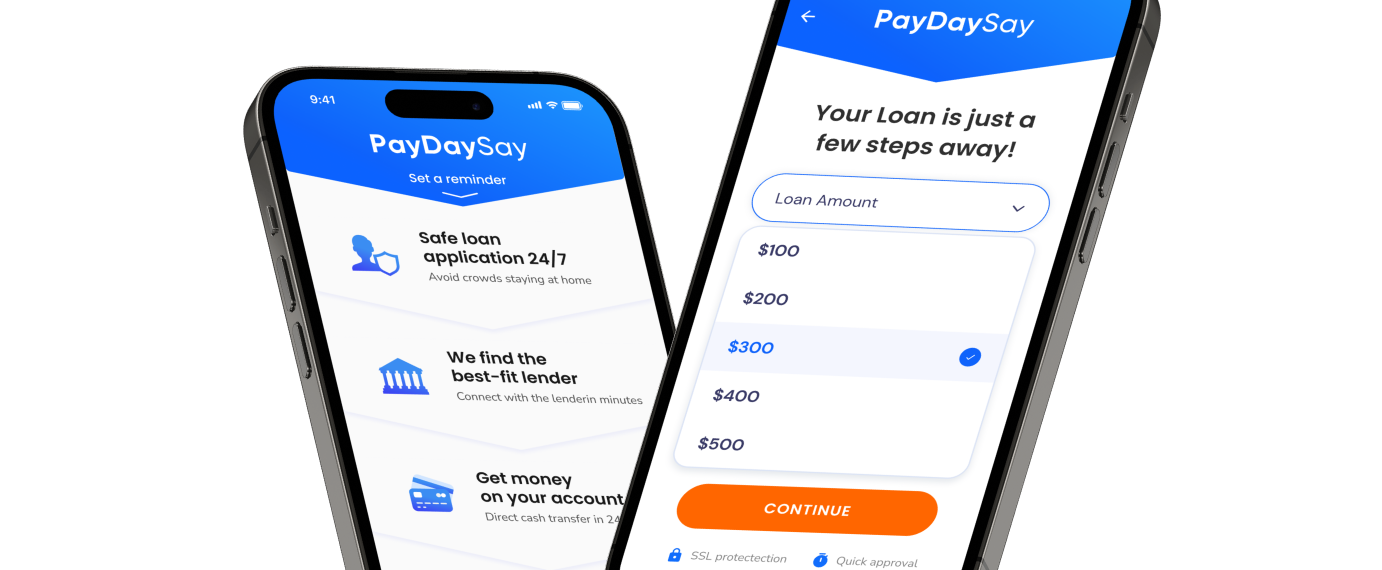Almost every US family owns a pet that they consider an important member of the household. However, the costs of pet ownership have rapidly increased within the last few years. Nowadays, everyone finds it difficult to maintain their furry friend and provide appropriate support.
Luckily, there’s an efficient solution to such an issue — pet care financial assistance. Owners of cats, dogs, and other domestic animals are welcome to apply if they come across an emergency treatment, necessary procedures, medications, or similar kind of pet needs.
This article is made specifically to let you learn more about pet financing options and make you acquainted with the entire process. For instance, how such loans work, how to afford the cost of care with bad credit, and several options to consider apart from getting a loan. It takes just 10 minutes to read until your struggles are over!
What Are Pet Financing Loans?
A pet loan is a type of financing that allows pet owners to address expenses related to looking after their little friends. Many people don’t know, but a pet loan is also a type of personal loan which means it can be used for a wide range of purposes. For example, pet surgery, needed training, medications, treatment, and even adoption.
Luckily, personal loans are unsecured, which means you don’t have to provide collateral and deal with unfixed APRs. Your repayment terms would include fixed monthly installment amounts that you’ll fully return during the designated borrowing tenure. Additionally, such loans can be obtained at various places, so you’re not limited in the choice of the financial institution.
To determine whether you qualify for pet financing, you should check your income, credit history, and credit score. Depending on the creditor, these figures vary. Yet, you have higher chances of getting a loan if you have good marks in your history and a decent score.
How Do Pet Loans Work?
If you can’t afford to pay for your pet’s treatment and want to apply for a loan, here’s the list of things you’ll have to do:
- Check your credit. Just like a personal loan, a pet loan is unsecured. It means that the lender will make his decision based on your creditworthiness. So, before you fill out an application form, check your credit report to know the odds of approval.
- Shop around. Most creditors allow their customers to prequalify online and see what rates they’re going to have. Make sure to check with at least three lenders to choose the most suitable option.
- Review your budget. Once you know the possible rates and have a certain creditor in mind, review your budget. Make sure you’re able to pay your monthly payments without failing, as such behavior leads to negative consequences. In the best-case scenario, you’ll get a penalty and credit score damage.
- Get acquainted with the terms and conditions. Read the contract twice before you sign it. Make sure you agree with the payday date, possible penalties, and fees. Check if there’s a grace period for missing installments, and if you can pay off your debt earlier without extra charges.
- Submit your application. Further in the process, you’ll have to provide all the asked personal details and attach the required documents. For example, you may need to add your pay stubs or bank statements, SSN, proof of address, etc. Once you get approval, the funds should be sent directly to your account.
- Keep up with your payment plan. We would recommend you set an autopay to avoid missing a payday. Most likely, you’ll start repaying the debt right away, so don’t postpone this task. In case you’ve missed a payday, your creditor may charge you a fee or grant you a grace period to deposit a monthly installment.
Choosing the Best Pet Loan Option To Cover
Although many pet owners may think that selecting a loan to cover a vet bill is an easy task, there are plenty of things to consider beforehand:
- Loan conditions. Don’t rush and look for several options to borrow a personal loan. Compare creditors by their features like available loan amount and applicable interest rate. Your goal is to find a lender who offers the financial support you need with a payment plan that works perfectly for you.
- Extra charges. Look through the creditor and find out if they require fees, how much, and what the terms are. Use an online calculator to determine your interest payments and possible fees.
- Review the loan application process. Look through your credit history, check your credit score, and if you meet the minimum income requirement, etc. Prequalify for finance support with several lenders to see if you need to look for other companies that accept clients with poor credit.
- Check the bonuses. Some payday app creditors would offer discounts, skip-a-payment programs, budget management help, and more. You may be eligible for some of those.
- Read the Terms and Conditions. Never neglect the importance of reading the terms of each lender’s agreement. You might find additional information, learn about your rights, and see all the pitfalls.
Here’s the overview of some of the best loan services to cover unexpected vet visits and additional pet medical care:
| Loan Conditions | Lender |
| Fixed APR: 7.8% – 35.99% Terms: 3-5 years Loan Amounts: $1000-$50,000 |
Upstart |
| Fixed APR: 9.99%-35.99% Terms: 2-5 years Loan Amounts: $3500-$40,000 |
Reach |
| Fixed APR: 7.99%-25.49% Terms: 2-7 years Loan Amounts: $5000-$100,000 |
LightStream |
| Fixed APR: 7.99%-24.99% Terms: 3-7 years Loan Amounts: $2500-$40,000 |
Discover |
Pet Loans For Bad Credit Score
Personal loans are typically hard to receive with bad credit, but you can still qualify for them. Yet, all the creditors set their requirements for minimum income and credit score. It’s important to look for as many available creditors as possible to find the best offers with low interest rates.
You may want to keep your creditworthiness in check and address all the bad marks on your history before applying for a new debt. Another good idea is to cover the previous loans if you haven’t done it yet. All these affect your creditworthiness and approval chances.
Furthermore, due to a poor score, you may obtain higher interest rates and lower loan amounts. It’s not a big deal as long as you’re looking for small debt opportunities. The percentage rates may be still hard to cover, so make sure you’re not getting into a debt trap by taking out such a vet care loan.
Pet owners can be eligible for another form of veterinary financing no credit check as well. Many veterinary clinics offer payment plans that don’t even require your credit check. Look through the Humane Society of the United States database to find finance options available in your state. Keep in mind that many non-profit organizations and veterinarians may be able to offer you their services at low cost.
Pros And Cons of Pet Loans
Before putting your signature on a contract, you have to consider both the benefits and drawbacks of such a deal.
Pros
Cons
How to Determine If You Need a Pet Loan?
While it’s a great idea to have pet insurance and some money aside for your pet’s care costs, sometimes loans become an inevitable decision. Still, you have to take time and think if you really need a personal loan, or if you can choose an efficient alternative to cover the vet bill.
Firstly, look into your savings and evaluate the amount of money you might spend on your four-legged friend. There’s a possibility that the expenses aren’t that high and you’re able to address them without borrowing.
In case you’ve checked your budget and you see that you lack finances for a necessary visit to a vet clinic, then you can consider getting a debt. Especially when your pet needs an x-ray or routine checkups after surgery, or therapy and emotional support. Some veterinary offices won’t even offer in-house financing which may be a problem if you don’t have enough cash or funds on your pet credit card with bad credit.
The situation with service animals is more serious. These pets need special attention and support. Moreover, the average cost of service dogs and horses varies between $15,000 to $30,000, meaning that expenses for their treatment would have a corresponding price.
So, there’s no reason to apply online for a loan if you can afford small amounts of money to treat your domestic animals. However, don’t hesitate for too long if a furry buddy has an emergency.
Cover The Cost to Take Care of a Pet
The first thing that comes to our mind is having a dog or a cat, while plenty of people also prefer to keep a rabbit, fish, bird, or even a reptile as their beloved pet. Therefore, the costs of care will depend on several factors like the type and the size of the animal, and the environment you provide.
Cats and Dogs
Many pet owners find it difficult to cover the costs of having a dog as the figures reach $1390 annually. This number includes food ($300), routine checkups ($250), and preventative meds against ticks, fleas, or heartworm. Don’t forget about additional expenses like grooming, toys, and treats. You’ll pay about the same amount for a cat — $1150, including neuter spraying ($150), initial veterinary care visit ($175), and microchip ($20).
Bird
Although the average amount that you spend on a bird is $300, the figures may increase significantly up to $5000. Yet, such expenses depend on the bird’s breed. Once you’ve bought the pet, the annual care amount would be around $185. Besides, you need to consider the prices for food ($75), vet bill amounts ($85), and toys ($25). Last but not least, don’t forget about a bird cage and applicable accessories ($70).
Reptile
The costs of getting a reptile greatly vary depending on the type of pet you have. The estimated amount includes food, supplies like cages, veterinary care, heat lamps, and tanks.
- Lizard — $190 to $260 per year
- Iguana — $250 to $350
- Snake — $250 to $450
Fish
The costs of getting a fish increase depending on the type of fish and the size of its tank. For example, you can get a simple goldfish and put it in a bowl, or buy a freshwater tropical tank. The annual estimate for a pet fish is $520 but you have to consider all the additional features like gravel ($50+), fish tank decor ($25), gallons of water (up to $20), and the fish tank itself (may cost up to $1000).
What Are My Other Financing Options To Pay For Vet Bill?
Getting a personal loan as a finance support is a great option but it may not suit everyone. Therefore, we would recommend you consider the following alternatives:
- Pet insurance. Purchasing pet insurance would be a good idea to address most of your four-legged friend’s needs like surgery. The biggest advantage is instant access to funds in emergency situations. The average costs vary between $10 to $90 per month depending on the plan.
- Credit cards. You can prequalify for a credit card with low interest rates or a 0% introductory APR. This alternative will help you to save up during the promotional period.
- Animal welfare organizations. If you don’t have enough funds to cover the vet bill or other care costs, you should contact Animal Welfare Organizations near you and check if they can offer you any finance options.
- Easy rate clinic. Vet schools may offer their services at low prices. They usually let their students do the procedures, which significantly reduces the figures.
- Extra fund. To ensure that your domestic animal can always receive emergency support, establish a separate fund. This way, you can always access funds without damaging your budget.
Conclusion
We all love our domestic animals and, just like for a family member, we want to provide them with the best treatment. Our little four-legged friends are the same as us — they need checkups, emergency medications, or special training. When you come across a financial hardship, getting extra finance is a great idea! This way you can manage the vet bill easily and stop the struggles of your pet. Moreover, you simply need to fill out an application and qualify for the requested amount.
But, apart from the care, you have to remember about your financial responsibility. You don’t want to put yourself into a debt trap by choosing a creditor with high interest or missing paydays, etc. Set an autopay, or make a billing book to keep your funds in check. By being organized, you help yourself to establish an emergency fund and support your little ones every time they need it.


 SSL protection & encryption
SSL protection & encryption











 on your homescreen
on your homescreen
